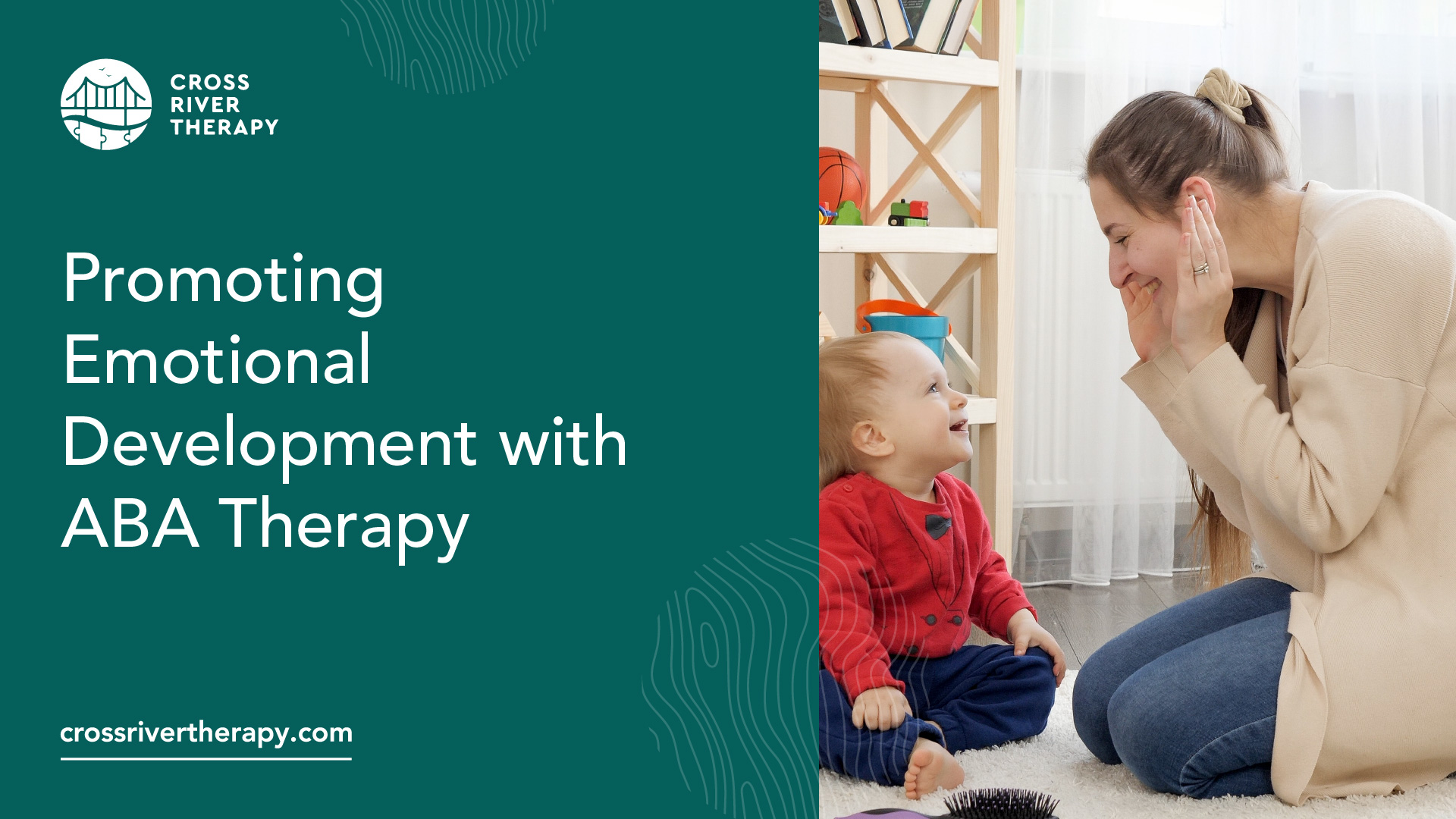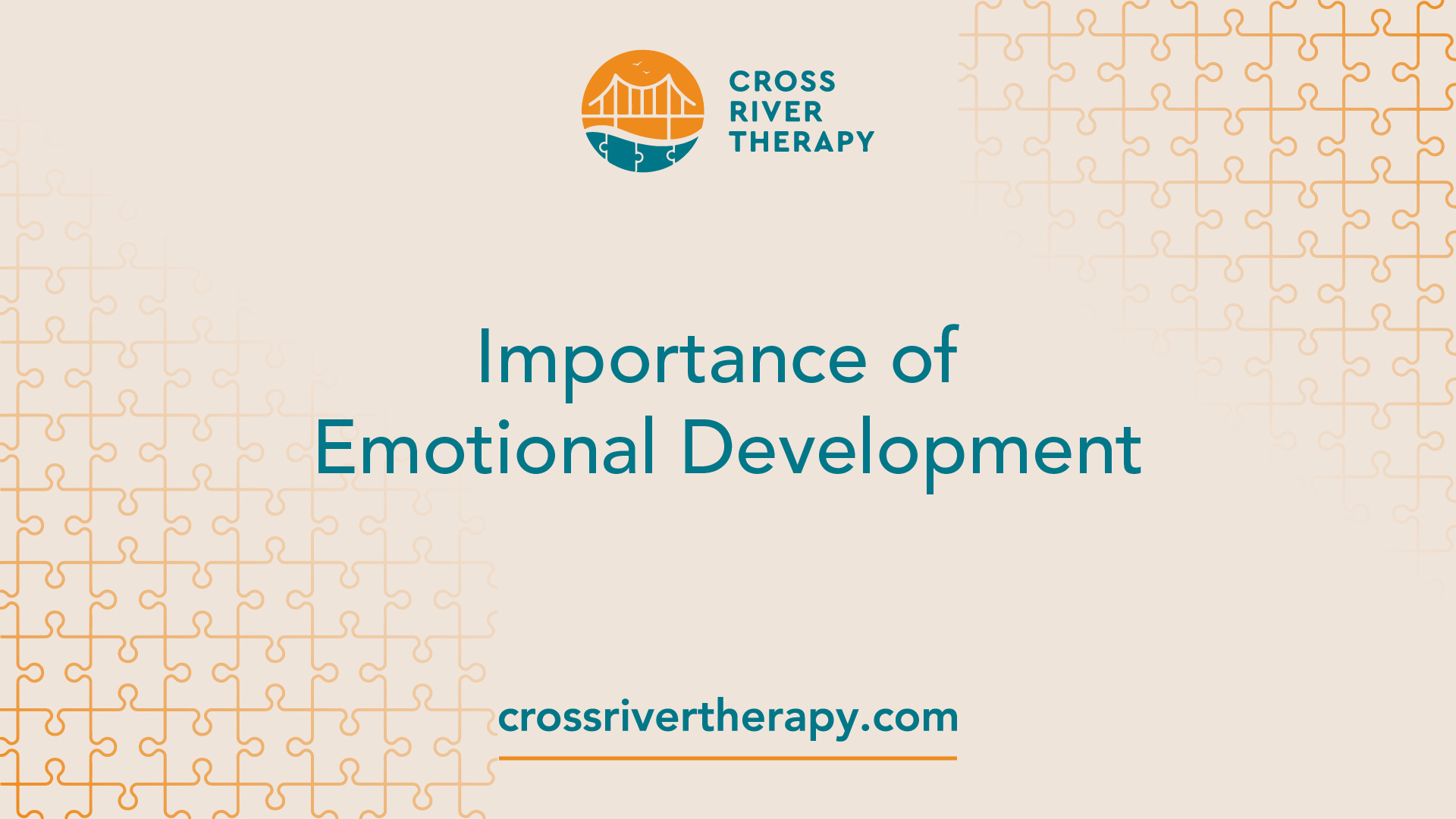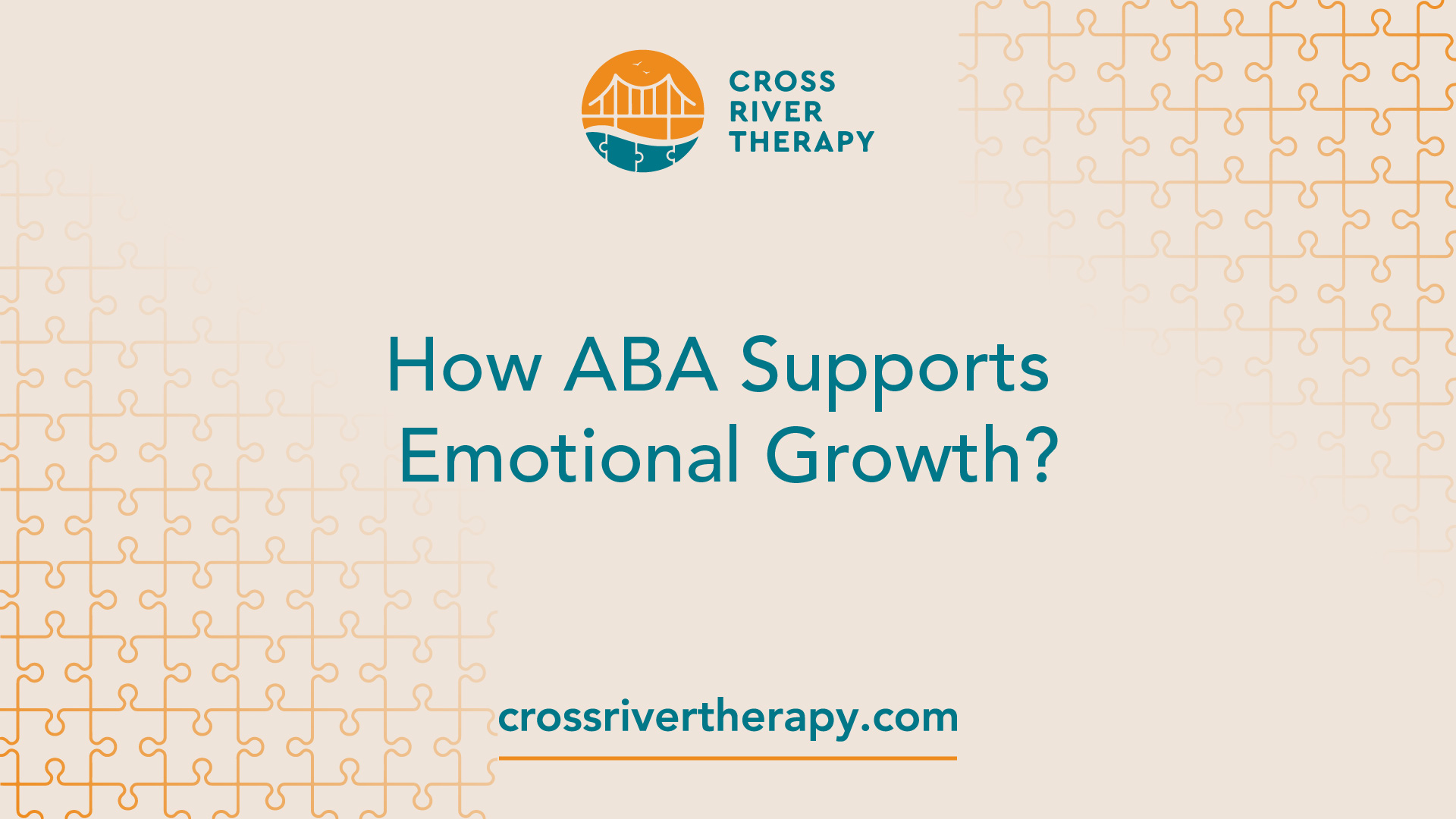Promoting Emotional Development with ABA Therapy
See how ABA therapy aids emotional development by promoting healthy emotional responses and regulation.

Understanding ABA Therapy
What is ABA Therapy?
ABA therapy, or Applied Behavior Analysis, is a structured approach that focuses on improving key behaviors in individuals with autism spectrum disorder (ASD). This therapy emphasizes essential skills such as social interactions, communication, academics, daily living, self-care, and job skills.
The primary goal of ABA therapy is to tailor interventions based on each individual's unique needs, strengths, weaknesses, age, and abilities to help them achieve their fullest potential and make meaningful progress in life.
ABA therapy is recognized as an evidence-based best practice treatment by both the US Surgeon General and the American Psychological Association. This designation signifies that it has undergone rigorous scientific evaluation, proving its effectiveness and quality.
History and Development
The origins of ABA therapy can be traced back to the 1960s when it was first implemented to support children with autism and other developmental disorders. Over the decades, extensive research has been conducted, resulting in more than 20 studies demonstrating the positive effects of intensive and long-term ABA therapy.
These studies have indicated significant improvements in various areas, including intellectual functioning, language development, daily living skills, and social functioning [2].
A board-certified behavior analyst (BCBA) is responsible for designing and overseeing ABA programs. These professionals customize the therapy to align with each learner's specific skills, needs, interests, preferences, and family dynamics.
This individualized approach is crucial for fostering emotional development and ensuring that children diagnosed with autism receive the support they need to thrive.
Importance of Emotional Development

Emotional development plays a vital role in the lives of children diagnosed with autism. It affects their ability to interact socially, manage stress, and build healthy relationships. Understanding the significance of emotional growth can help parents support their children effectively.
Emotional Regulation Challenges
Children with autism spectrum disorder (ASD) often face substantial challenges in emotional regulation. A 2021 study revealed that autistic children and teens are four times more likely to struggle with controlling their emotions compared to their neurotypical peers.
This difficulty can manifest in various behaviors, such as:
Behaviors Associated with Emotional Dysregulation
- Biting
- Hitting
- Tantrums
- Social Withdrawal
- Self-Injury
- Extreme Silliness
Benefits of Emotional Skills
Developing emotional regulation skills is crucial for children with ASD to navigate social situations and develop meaningful relationships. Emotional regulation enhances their ability to:
- Form friendships
- Maintain general health
- Handle stressful situations
When children learn to identify and express their feelings, they become more equipped to manage challenging circumstances. Effective strategies for promoting emotional skills include practicing relaxation techniques, modeling appropriate emotional responses, and engaging in collaborative problem-solving.
Improving emotional skills can lead to significant benefits in a child's overall emotional, social, and academic success.
How ABA Supports Emotional Growth?

ABA therapy plays a vital role in supporting emotional development for children diagnosed with autism. Through various techniques and the application of positive reinforcement, it helps children cultivate essential emotional regulation skills.
Techniques Used in ABA
ABA therapy employs a range of strategies to assist children in recognizing and expressing their feelings appropriately. These techniques are designed to create a supportive environment for emotional growth.
Some of the primary techniques include:
- Emotion Charts: Visual aids that help children identify and articulate their feelings.
- Modeling Behavior: Demonstrating appropriate emotional responses for children to observe and imitate.
- Feedback and Reinforcement: Providing praise or rewards when children exhibit desired emotional behaviors.
- Encouraging Social Interaction: Facilitating opportunities for children to engage with peers, enhancing their social skills.
- Teaching Coping Mechanisms: Introducing strategies to help children manage their emotions in various situations.
These methods contribute to developing crucial emotional regulation skills, enabling children to handle challenging situations and form meaningful relationships [3].
Role of Positive Reinforcement
Positive reinforcement is a fundamental aspect of ABA therapy that encourages desired behaviors through rewards. This technique not only motivates children but also helps them associate positive feelings with appropriate emotional responses.
The key benefits of positive reinforcement in emotional development include:
- Encourages Good Behavior: Reinforcement of positive actions leads to repeated desirable behaviors.
- Builds Confidence: Children feel proud when they receive praise, which boosts their self-esteem.
- Promotes Learning: Positive experiences associated with emotional regulation enhance learning retention.
- Reduces Negative Behaviors: Reinforcing positive behaviors can decrease instances of challenging behaviors.
By providing consistent feedback and rewards, ABA therapy helps children with autism spectrum disorder modify their behavior and develop responsible emotional responses. This supportive approach to emotional growth is essential for their overall emotional, social, and academic success.
Through the combination of effective techniques and positive reinforcement, ABA therapy fosters a nurturing environment for emotional development, making a significant impact on the lives of children and their families.
Strategies for Emotional Regulation
Helping children with autism spectrum disorder (ASD) develop emotional regulation skills is key to their emotional growth and social interaction. ABA therapy offers effective strategies to assist in this area.
Identifying and Expressing Emotions
One of the foundational steps in emotional regulation is teaching children how to identify and express their emotions. ABA therapy utilizes various tools to facilitate this process.
Emotion charts can be particularly effective, as they allow children to visually recognize different feelings and associate them with appropriate expressions.
Children learn to recognize these emotions in themselves and others, which is crucial for developing self-awareness and empathy. As they practice identifying their feelings, they also learn how to express them in healthy ways.
Techniques such as modeling appropriate behaviors and providing feedback for positive emotional expression reinforce these skills [3].
Coping Mechanisms to Teach
Once children can identify their emotions, the next step is to equip them with coping mechanisms to manage those feelings effectively. ABA therapy emphasizes several strategies to help children navigate challenging situations:
- Relaxation Techniques: Teaching breathing exercises or mindfulness practices can help children calm down when feeling overwhelmed.
- Modeling Appropriate Emotional Responses: Adults can demonstrate how to handle various emotions, providing clear examples for children to follow.
- Problem-Solving Together: Collaboratively working through difficult situations encourages children to think critically about their feelings and responses.
Research shows that developing emotional regulation skills can significantly improve a child's ability to handle difficult situations and build meaningful relationships [4].
In ABA therapy, these strategies not only promote emotional growth but also help children with social-emotional delays learn to navigate social interactions, such as making eye contact and understanding social cues.
Measuring Progress in ABA
Measuring progress in ABA therapy is essential for ensuring that children diagnosed with autism develop emotional skills effectively. This section outlines how to set SMART goals and track emotional development to facilitate this process.
Setting SMART Goals
In ABA therapy, behavior analysts establish goals that align with the SMART criteria: Specific, Measurable, Achievable, Relevant, and Time-bound. These goals are tailored based on the child’s age and abilities, guiding the therapy strategies used to promote emotional development.
- Specific: Goals should clearly define the desired outcome. For instance, “increase the ability to express emotions verbally.”
- Measurable: Goals must include criteria for tracking progress, such as frequency or accuracy. For example, “the child will use words to express feelings in 4 out of 5 opportunities.”
- Achievable: Goals should be realistic based on the child's current skills and capabilities.
- Relevant: Goals must align with the child’s overall treatment plan and family needs.
- Time-bound: Goals should have a clear timeframe for achieving the desired outcome, such as “within six months.”
By setting these types of goals, therapists can create a structured framework for progress, ensuring that therapy remains focused and effective.
Tracking Emotional Development
Tracking emotional development in ABA therapy involves measuring progress through specific criteria. This data-driven approach allows parents, caregivers, and therapists to make informed decisions about the child's therapy.
Measurable goals provide clarity on the child's advancement in emotional regulation and other skills. The criteria used can include frequency, duration, or accuracy of emotional responses.
For instance, a therapist might track how often a child uses coping strategies during stressful situations or how accurately they identify their emotions.
- Frequency: How often the child expresses emotions appropriately.
- Duration: The length of time the child can maintain emotional regulation during activities.
- Accuracy: The correctness of the child’s emotional expressions or responses.
Research indicates that intensive and long-term ABA therapy leads to significant improvements in various areas, including emotional development. A structured approach to monitoring these developments can help identify areas needing further work and adjust therapy techniques accordingly.
For more information on how ABA can support emotional development, consider exploring ABA therapy for early childhood development or ABA therapy for fine motor skills.
Involving Parents in Therapy
Importance of Family Engagement
Parental involvement is a crucial aspect of successful ABA therapy. Engaging families enhances communication and social interaction in children diagnosed with autism spectrum disorder (ASD). Research indicates that parental synchrony and sensitivity can significantly improve children's reciprocity of social interaction.
When parents actively participate in therapy, they gain insights into their child’s emotional and behavioral patterns. This knowledge empowers them to implement strategies at home, reinforcing what is learned during therapy sessions.
Early identification of social-emotional-behavioral delays is vital, as it allows families to seek appropriate support. Programs like ABA therapy provide a structured approach to help children achieve their developmental milestones in a supportive and evidence-based environment.
Collaborative Approaches to Success
Collaboration between parents, therapists, and other professionals is essential for effective ABA therapy. Tailoring goals to each child's unique strengths and challenges ensures that the therapy is personalized.
This collaborative effort includes parents, Board Certified Behavior Analysts (BCBAs), caregivers, and educators working together to set meaningful and achievable goals [1].
A table below illustrates the key roles of parents and professionals in the collaborative approach:
- Parents: Provide insights on the child's behavior, implement strategies at home, and reinforce learning.
- ABA Therapists: Conduct therapy sessions, observe behavior, and provide continuous feedback.
- BCBAs: Oversee therapy plans, tailor goals, and ensure evidence-based practices are followed.
- Educators: Support learning in the classroom, communicate the child's progress, and collaborate with parents.
By fostering open communication and sharing observations, parents can help create a consistent environment that supports their child's emotional development. Such collaboration can also facilitate the teaching of essential life skills, preparing children for greater independence in adulthood.
Involving parents in ABA therapy not only enhances the child’s emotional growth but also builds a supportive network that contributes to the overall success of the therapy.
FAQs
How is progress measured?
By improvements in identifying, expressing, and managing emotions, and responding to others' emotions.
Can ABA Therapy be personalized for emotional needs?
Yes, it can be tailored to address specific emotional challenges and strategies.
How can parents support emotional development?
By reinforcing emotion identification, practicing coping strategies, and providing a supportive environment.
What role do social stories play?
Social stories help understand emotions and appropriate responses through visual narratives.
Are additional strategies used?
Additional strategies may include mindfulness exercises, cognitive-behavioral techniques, and environmental modifications.
References
[1]: https://www.goldstarrehab.com/parent-resources/aba-therapy-goals
[2]: https://www.autismspeaks.org/applied-behavior-analysis
[3]: https://heartlinksaba.com/emotional-regulation-in-aba/
[4]: https://www.risingaboveaba.com/autism-blog/developing-emotional-regulation-skills
[5]: https://awardbh.com/aba-therapy-for-social-emotional-delays/
[6]: https://www.ncbi.nlm.nih.gov/pmc/articles/PMC7265021/
[7]: https://www.empowerbh.com/blog/the-goals-of-aba-therapy-for-teens/



